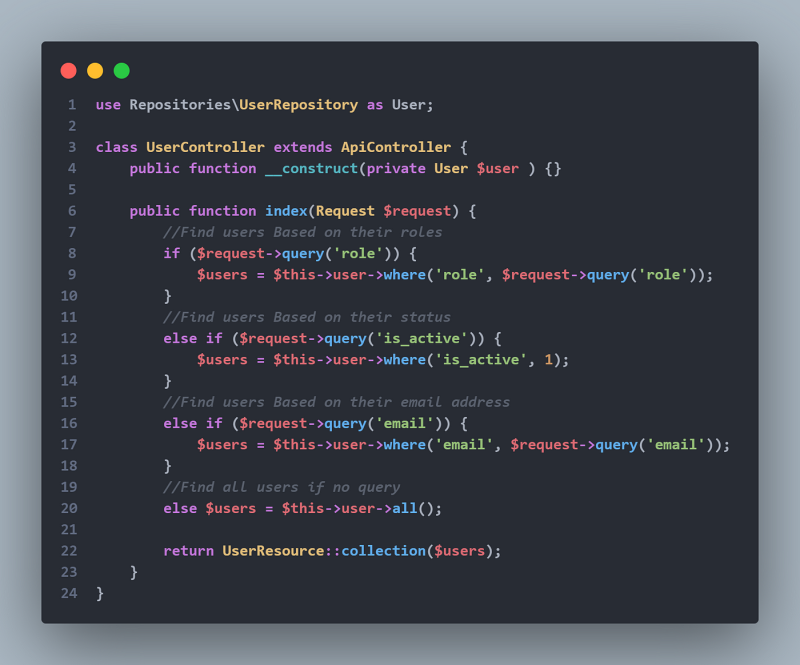When building modern Laravel applications, developers often face decisions about how to organize and reuse code effectively. One common dilemma is choosing between services and traits for encapsulating reusable logic. While both provide ways to reduce code duplication, they serve different purposes and have distinct use cases. Understanding when to use a service and when to opt for a trait is crucial for writing clean, maintainable, and scalable code. In this article, we will dive deep into the differences between services and traits in Laravel, examining their strengths, weaknesses, and ideal use cases to help you make informed architectural decisions.
Key Differences Between Services and Traits
- State vs. Stateless:
- Services: Services can maintain state (e.g., keeping track of injected dependencies, configuration settings, or performing operations that have side effects like API calls).
- Traits: Traits are stateless. They are just blocks of reusable code that can be included in a class. They don’t have their own state or internal dependencies.
- Dependency Injection:
- Services: Services are usually instantiated through dependency injection, allowing you to easily pass in dependencies like other services, models, or configurations. This is important for modularity and testability.
- Traits: Traits cannot accept dependencies directly because they are just “copy-paste” blocks of code that are merged into the class using them. This limits their flexibility when you need to inject dependencies.
- Testability:
- Services: Because services are standalone classes, they are much easier to test. You can mock their dependencies or call them in isolation.
- Traits: Traits make testing harder since they must be used inside a class. You cannot test a trait by itself directly, and mocking can be tricky because traits are part of a class.
- Single Responsibility:
- Services: A service adheres to the Single Responsibility Principle. It encapsulates specific logic (such as handling email sending, file uploads, etc.) and provides clear separation from other parts of your application.
- Traits: Traits can often lead to code duplication or coupling if overused. Since they mix functionality into multiple classes, they can violate the Single Responsibility Principle by spreading logic across many classes.
- Flexibility:
- Services: Services are highly flexible. You can instantiate them as needed, mock them, or change how they behave based on different contexts (e.g., you can bind different implementations to an interface).
- Traits: Traits provide less flexibility. They are “static” blocks of code that get injected into the class and don’t offer the flexibility of creating different instances or behavior in different contexts.
- Global State:
- Services: Services can keep track of global state (such as configuration settings or the result of an API call), which might be required in some cases. They also allow for creating singletons, ensuring that a service’s state remains consistent across the entire application.
- Traits: Traits cannot manage global state. They are merely shared methods added to multiple classes, and each class will handle the state individually.
When to Use a Service:
- Complex Logic: If you have logic that requires dependencies (e.g., making database queries, sending emails, making API calls), a service is ideal because it can manage those dependencies cleanly.
- Testability: When you need the ability to test a specific piece of logic independently or mock its dependencies during unit testing.
- Reusable and Decoupled Logic: If the logic should be reused in multiple places but in a decoupled manner (e.g., user authentication, email notifications, or payment processing).
- Maintaining State: If you need to manage some state or configuration that persists across multiple calls or instances.
When to Use a Trait:
- Simple Code Reuse: Traits are good for reusing simple methods across multiple classes. For example, you might have a trait that provides utility methods like formatting dates or strings.
- No Dependencies: If the logic inside your trait doesn’t rely on external dependencies or require state management, a trait can be an easy and quick way to reuse code.
- Helper Methods: Traits are excellent for small helper methods that need to be shared across multiple classes but don’t need their own service class.
Example Comparison:
Using a Trait (for Simple, Stateless Reuse):
phpCopy codetrait StringHelper {
public function formatUpperCase($string) {
return strtoupper($string);
}
}
class Product {
use StringHelper;
public function getNameUpperCase() {
return $this->formatUpperCase($this->name);
}
}
- This is perfect when you have a small method (like
formatUpperCase()) that you need to reuse in multiple classes. - No dependencies are required, and no complex logic is involved.
Using a Service (for Dependency and State Management):
phpCopy codeclass ProductService {
protected $apiClient;
public function __construct(ApiClient $apiClient) {
$this->apiClient = $apiClient;
}
public function fetchProductData($productId) {
return $this->apiClient->get("/products/{$productId}");
}
}
class ProductController {
protected $productService;
public function __construct(ProductService $productService) {
$this->productService = $productService;
}
public function show($id) {
$product = $this->productService->fetchProductData($id);
return view('product.show', compact('product'));
}
}
- Here, the
ProductServicehas a dependency (ApiClient) and encapsulates logic for fetching product data from an API. This would be hard to implement using a trait because of the required dependency injection.
Conclusion:
- Use services when you need flexibility, testability, and dependency management.
- Use traits for simple, reusable methods that don’t rely on external dependencies or state.
In short, services are better for handling complex logic with dependencies and state, while traits are suitable for lightweight code reuse without external dependencies.
